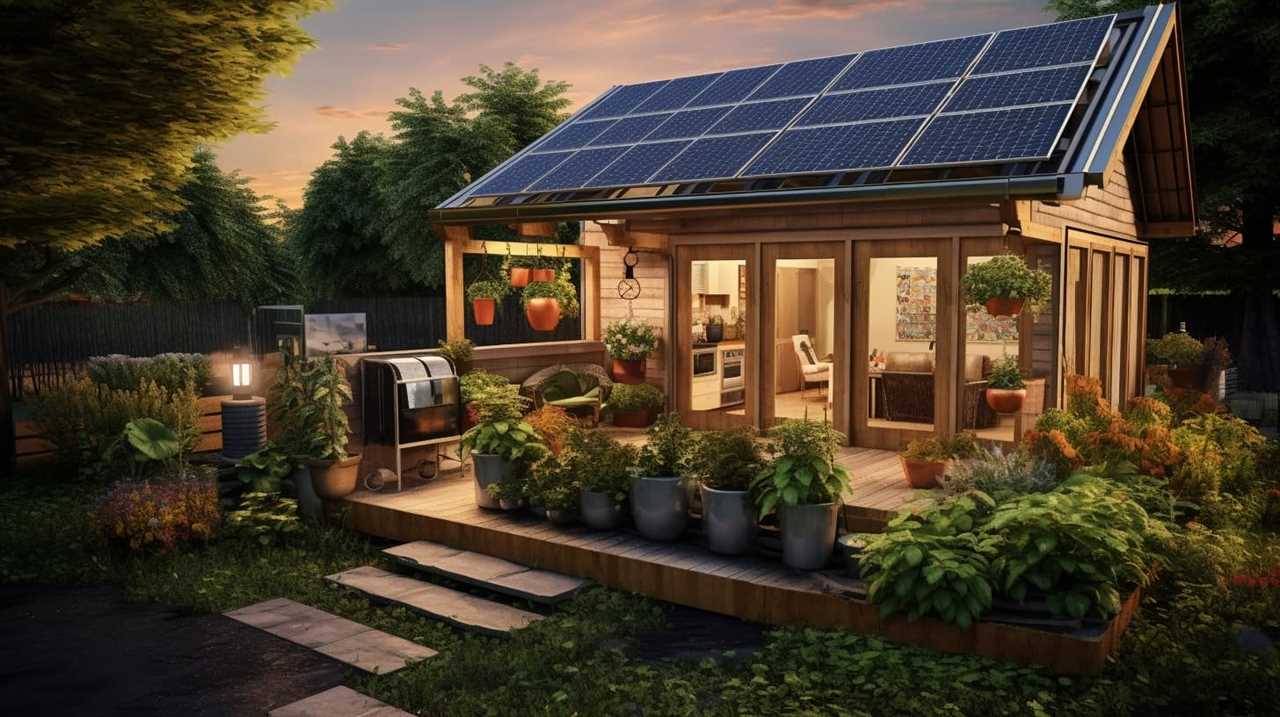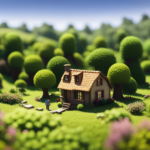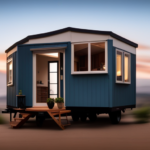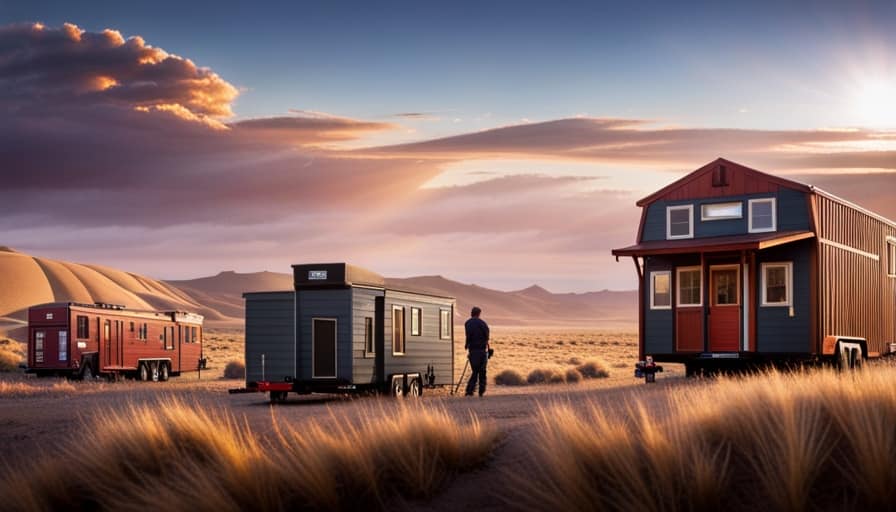We have the solutions for your pressing inquiries about tiny houses! Were you aware that the typical size of a tiny house is just 400 square feet? That sure is a snug living space!
In this article, we’ll dive into the top 10 frequently asked questions about these charming homes. From the cost of building to the environmental benefits, we’ll cover it all.
So, sit back and get ready to learn everything you need to know about tiny houses. Let’s get started!
Key Takeaways
- Tiny houses prioritize efficient use of space while still providing all the essentials for comfortable living.
- Building a tiny house can be a cost-effective option for long-term savings compared to traditional homes.
- The cost of building a tiny house depends on whether you choose to build it yourself or hire professional builders.
- Tiny houses have a positive environmental impact due to sustainable construction and a small footprint.
What Is the Average Size of a Tiny House
We often wonder, what’s the average size of a tiny house? When it comes to tiny houses, there’s no one-size-fits-all answer. However, the average size of a tiny house typically ranges between 100 and 400 square feet. This compact size allows for efficient use of space while still providing all the essentials for comfortable living.

Design options for tiny houses are endless, with various layouts, styles, and customization possibilities. Some popular design choices include lofted sleeping areas, multi-functional furniture, and clever storage solutions. These design options maximize the use of every square inch and create a cozy and functional living space.
Now that we know the average size and design options, let’s explore the next question: how much does it cost to build a tiny house?
How Much Does It Cost to Build a Tiny House
When it comes to building a tiny house, one of the most common questions is how much it will cost. The cost of building a tiny house can vary greatly depending on factors such as size, materials used, and location.
In this section, we’ll discuss the points of cost versus long-term savings and the decision between DIY or hiring professional builders.

Cost Vs. Long-Term Savings
Building a tiny house can be a cost-effective option for those looking to save money in the long run. While the initial cost of building a tiny house may vary depending on factors such as location, size, and materials used, it’s generally much lower compared to traditional homes.
Here are some key points to consider when analyzing the cost vs. long-term savings of building a tiny house:
-
Reduced construction costs: Building a smaller structure requires fewer materials, resulting in lower construction costs.
-
Lower utility expenses: Tiny houses are designed to be energy-efficient, leading to reduced utility bills.
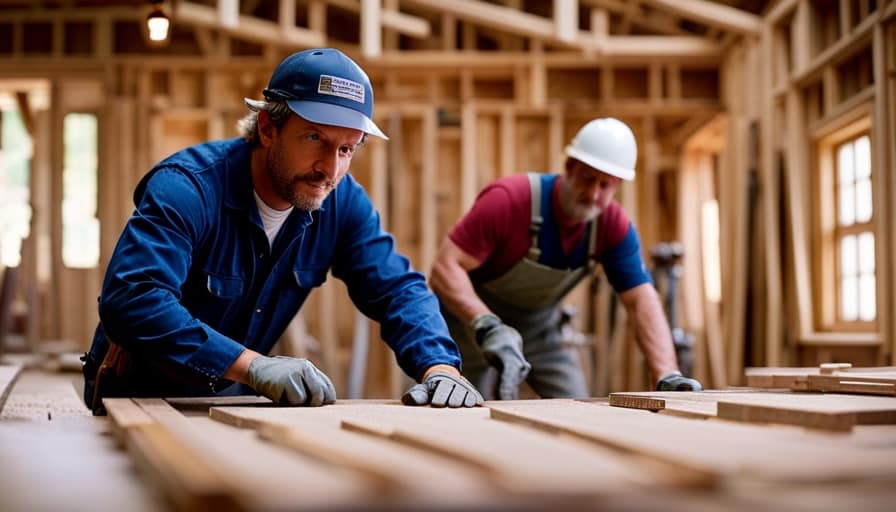
-
Minimal maintenance: With less square footage, there’s less space to maintain, resulting in lower maintenance costs.
-
Affordable lifestyle: Living in a tiny house promotes a minimalist lifestyle, allowing you to save on expenses such as furniture, decor, and other unnecessary items.
DIY or Professional Builders
One of the most common questions people ask when considering building a tiny house is "How much does it cost?" The answer to this question depends on whether you choose to build the tiny house yourself or hire professional builders. DIY (Do-It-Yourself) builders have the advantage of saving on labor costs but may require more time and effort. On the other hand, professional builders can provide expertise and save you time, but they come with a higher price tag. To give you a better understanding, here is a table comparing the average costs for DIY and professional builders:
| DIY Builders | Professional Builders | |
|---|---|---|
| Cost Range | $10,000 – $30,000 | $30,000 – $100,000 |
| Time Frame | 3 – 12 months | 2 – 6 months |
| Skills Required | Basic construction skills | None required |
| Customization | High level of customization | Limited customization options |
When deciding between DIY and professional builders, it is important to consider your budget, time constraints, and level of expertise.
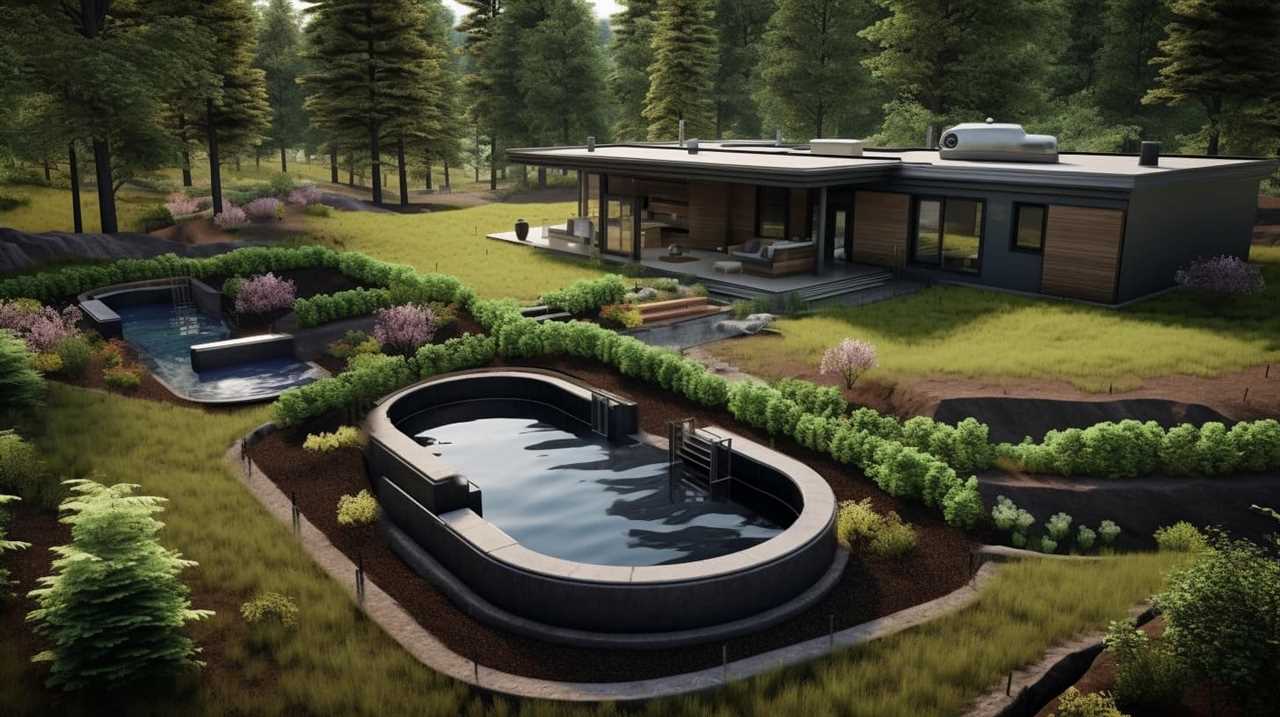
Are Tiny Houses Legal in All Areas
Before we dive into the details, let’s address the question of whether tiny houses are legal in all areas. The answer isn’t so straightforward, as tiny house regulations and legal restrictions vary from place to place. However, here are a few things to consider:
-
Zoning Laws: Many areas have specific zoning laws that govern the size and type of dwellings allowed. Some zones may permit tiny houses as long as they meet certain criteria.
-
Building Codes: Building codes ensure the safety and structural integrity of a dwelling. Depending on the area, tiny houses may need to comply with these codes, which can impact their legality.
-
Minimum Square Footage: Some areas have minimum square footage requirements for residential properties. Tiny houses may not meet these requirements, making them illegal in certain areas.
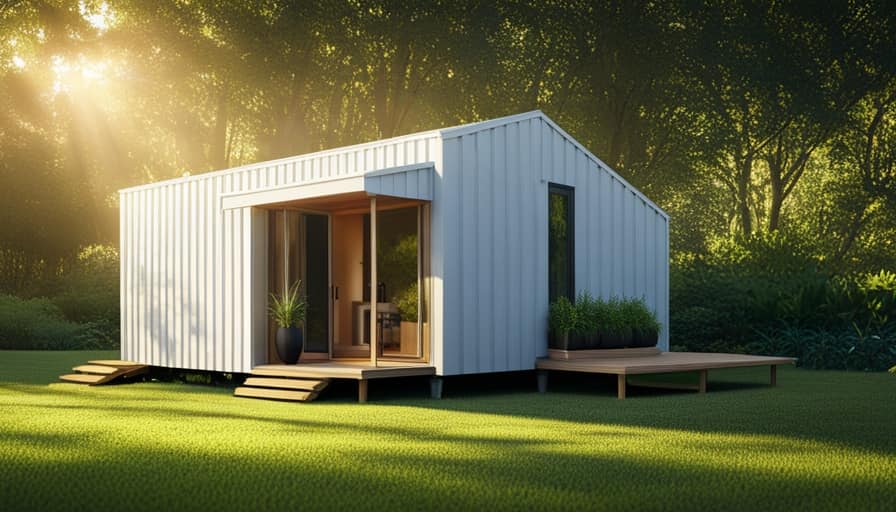
-
Association Rules: If you plan to park your tiny house in a community or on private property governed by an association, be sure to check their rules and regulations regarding dwellings.
It is crucial to research and understand the local regulations and restrictions before embarking on your tiny house journey.
What Are the Benefits of Living in a Tiny House
Living in a tiny house offers a range of space-saving advantages. With limited square footage, every inch is utilized efficiently, allowing for creative storage solutions and a clutter-free living environment.
Additionally, the financial freedom potential of a tiny house is undeniable. The reduced cost of construction, lower utility bills, and minimal maintenance expenses can lead to significant savings and a more sustainable lifestyle.
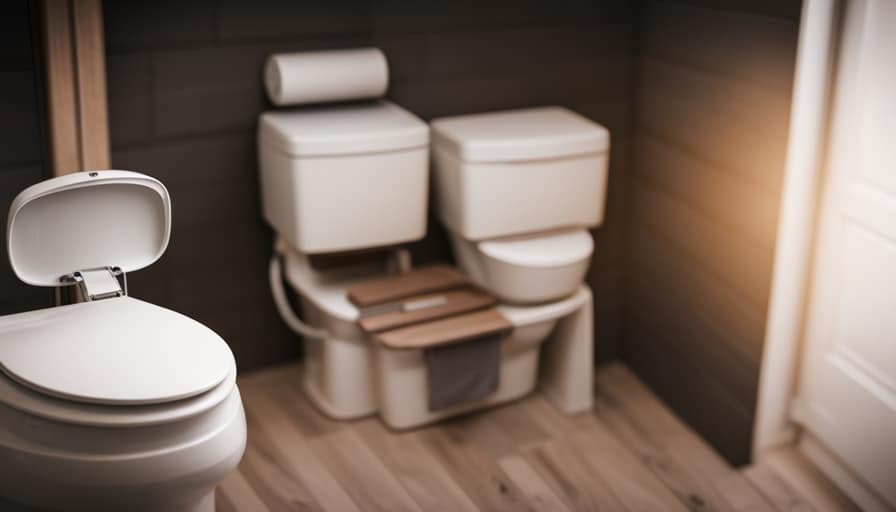
Space-Saving Advantages
We love the space-saving advantages of living in a tiny house because they allow us to maximize every square inch of our home. Here are some of the benefits we enjoy:
-
Clever Storage Solutions: Tiny houses often incorporate innovative storage ideas, such as built-in shelves, hidden compartments, and multi-functional furniture. These solutions help us keep our belongings organized and easily accessible.
-
Open Floor Plans: The open layout of a tiny house makes it feel more spacious and airy than traditional homes. With fewer walls and partitions, we can utilize the entire space efficiently.
-
Outdoor Living: Many tiny houses have outdoor living areas, such as decks or patios, which expand our usable space. These outdoor areas become extensions of our home, perfect for relaxing, dining, or entertaining guests.
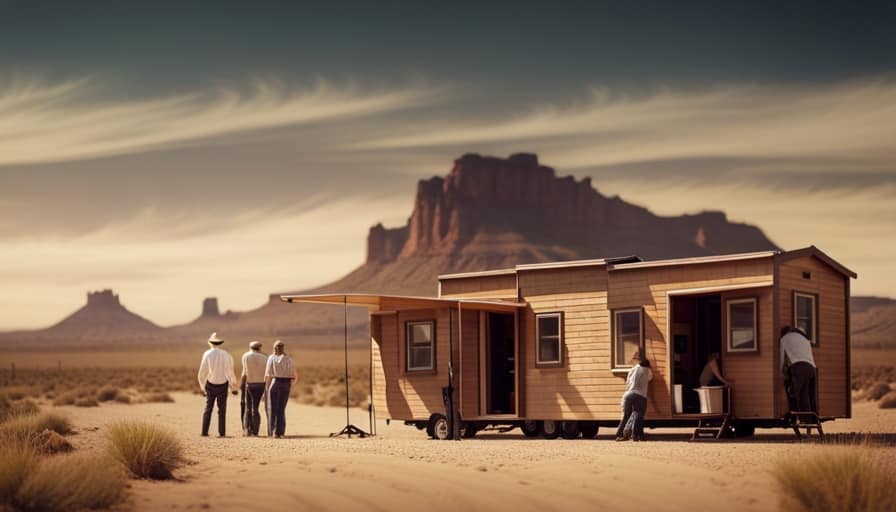
-
Minimalist Lifestyle: Living in a tiny house encourages us to embrace a minimalist lifestyle, where we prioritize experiences over possessions. This mindset allows us to appreciate the simple joys of life and reduces clutter, making our small space feel even more open and inviting.
Living in a tiny house is a wonderful way to explore creative space-saving ideas and maximize the potential of small spaces.
Financial Freedom Potential
With the potential for reduced monthly expenses and a simplified lifestyle, living in a tiny house can provide us with greater financial freedom. By embracing a minimalist lifestyle, we can save money on housing costs, allowing us to allocate our resources towards other aspects of our lives, such as travel, education, or early retirement. Financial planning becomes easier as we have a clearer understanding of our expenses and can prioritize our financial goals. Living in a tiny house also encourages us to be more mindful of our consumption habits, leading to reduced spending on unnecessary items.
| Financial Freedom Benefits | Explanation |
|---|---|
| Reduced Housing Costs | Living in a tiny house means lower mortgage or rental payments, resulting in significant savings over time. |
| Simplified Lifestyle | By downsizing our belongings and living in a smaller space, we can reduce our expenses on utilities, maintenance, and furnishings. |
| Increased Savings | With lower monthly expenses, we have the opportunity to save more and build a stronger financial foundation for the future. |
Living in a tiny house offers not only a unique and fulfilling lifestyle but also the potential for greater financial freedom. By embracing a minimalist lifestyle and practicing effective financial planning, we can enjoy the benefits of reduced expenses and increased savings.
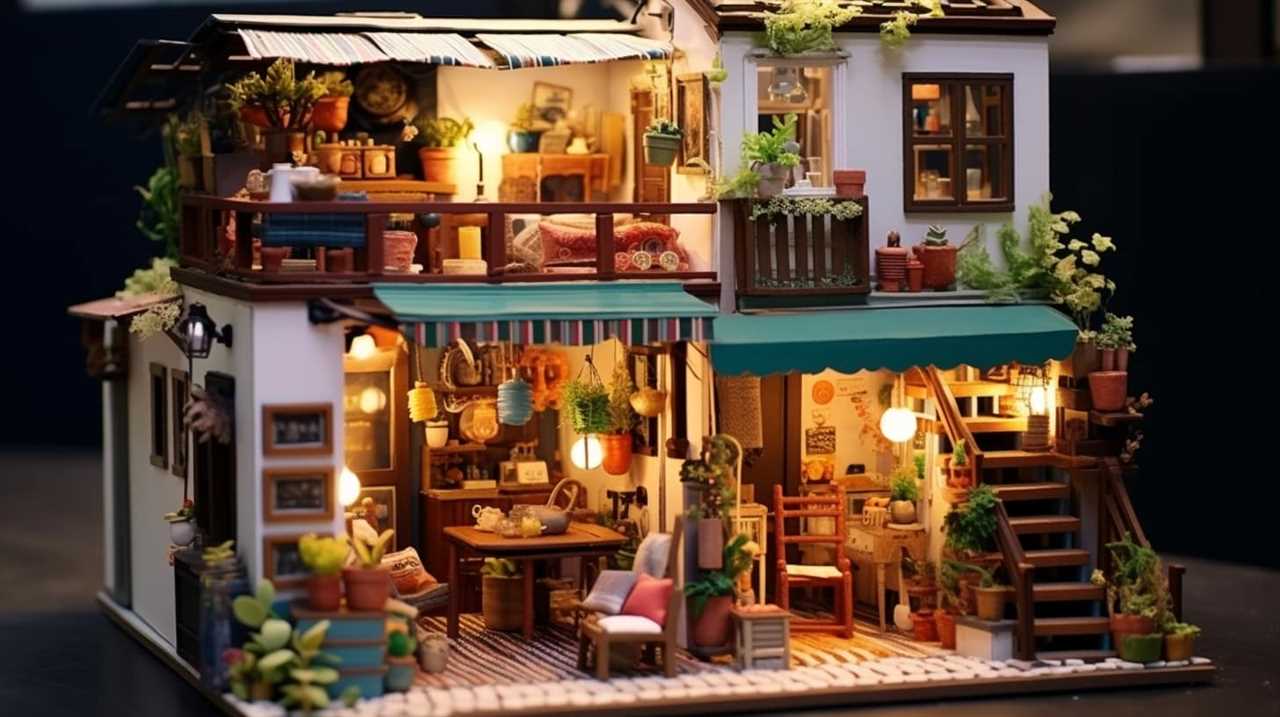
Can You Customize the Interior of a Tiny House
How can we personalize the interior of our tiny house? The good news is that there are plenty of customization options available to make your tiny house feel like home. Here are some interior design ideas to consider:
-
Multifunctional furniture: Opt for furniture that serves multiple purposes, such as a bed that doubles as a sofa or storage space.
-
Creative storage solutions: Make the most of every inch of space by incorporating clever storage solutions like hidden compartments, built-in shelving, and hanging organizers.
-
Color scheme and decor: Choose a color scheme that reflects your personal style and makes the space feel cozy. Add decorative elements like artwork, plants, and throw pillows to personalize the space even further.
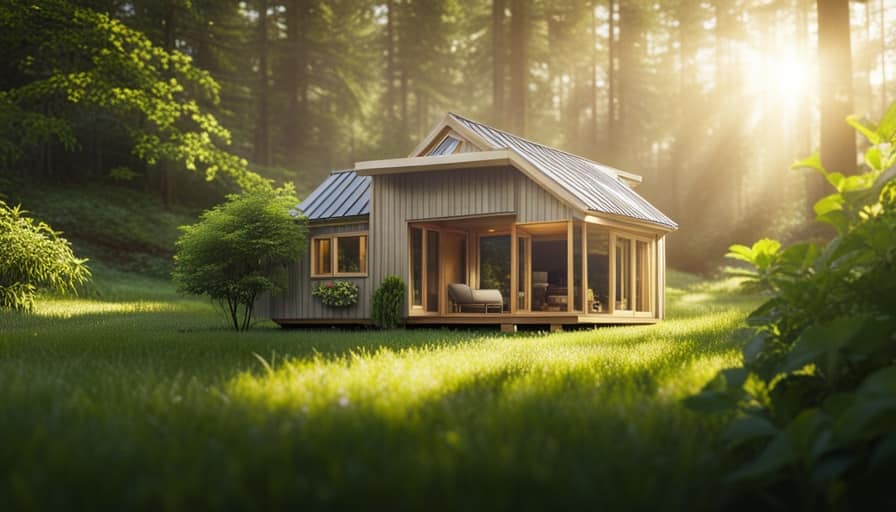
-
Lighting: Use a combination of natural and artificial lighting to create a warm and inviting atmosphere. Consider installing skylights or large windows to bring in more natural light.
By customizing the interior of your tiny house, you can create a space that’s both functional and reflects your unique style and personality.
Now that you know how to personalize your tiny house, let’s move on to the next topic: how do you find land for a tiny house?
How Do You Find Land for a Tiny House
When it comes to finding land for a tiny house, there are a few important factors to consider.

One of the first things to look into is the land zoning regulations in your area. This will determine if you can legally place a tiny house on the land and what requirements you may need to meet.
Additionally, you’ll need to decide whether you want to rent or own the land, as this will impact your options and budget.
Land Zoning Regulations
Finding land for a tiny house can be challenging due to varying land zoning regulations. These regulations determine how and where you can build or park your tiny house. Here are some key factors to consider when looking for land:
-
Zoning restrictions: Check with local authorities to understand the zoning regulations in the area you’re interested in. Some areas may allow tiny houses as primary residences, while others may only permit them as accessory dwelling units or for temporary use.

-
Land availability: Look for land that’s suitable for a tiny house, taking into account factors such as access to utilities, proximity to amenities, and the size of the land.
-
Community regulations: Some neighborhoods or communities may have their own rules regarding tiny houses, so it’s important to research and understand any additional restrictions or requirements.
-
Permitting process: Familiarize yourself with the local permitting process, as it may vary depending on the location. This will ensure that you’re aware of any specific documentation or approvals needed before you can legally place your tiny house on the land.
Rental Vs. Ownership
When considering land for a tiny house, we must decide between rental or ownership, as well as find a suitable location for our needs. Both options have their own set of benefits and advantages.
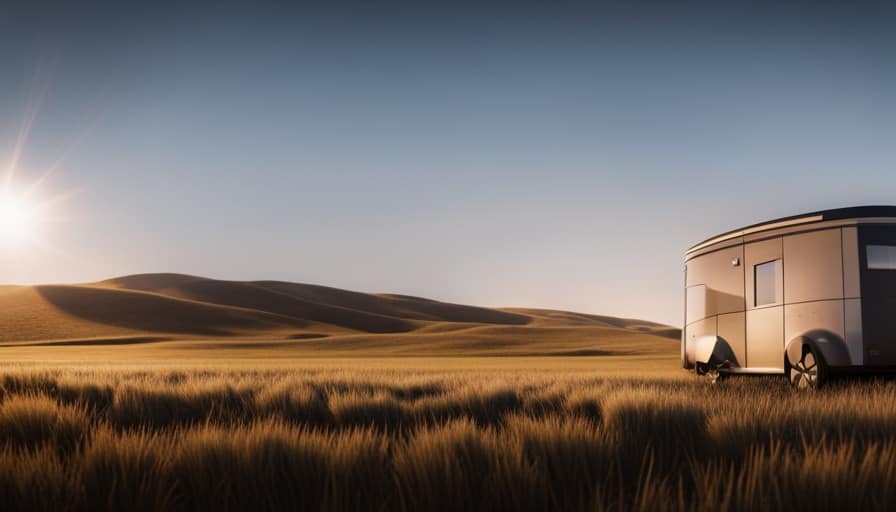
Renting land for a tiny house provides flexibility and freedom to move around, allowing us to explore different communities and experience various lifestyles. It also eliminates the financial burden of purchasing land and paying property taxes.
On the other hand, owning land for a tiny house offers stability and the opportunity to customize and personalize our space. It gives us a sense of ownership and the ability to build equity over time.
Whether we choose to rent or own, finding the right location is crucial. We need to consider factors such as proximity to amenities, zoning regulations, and access to utilities.
Now, let’s explore the challenges of living in a tiny house.
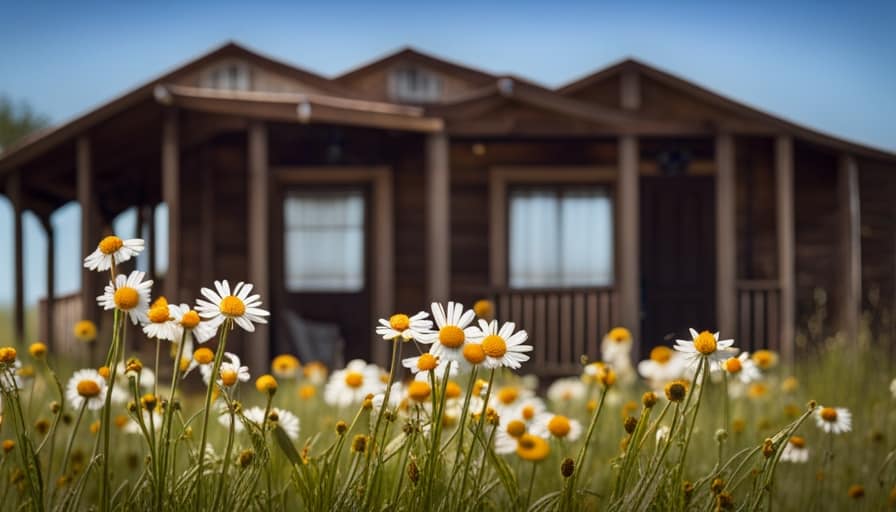
What Are the Challenges of Living in a Tiny House
Living in a tiny house can bring about certain difficulties that we must address. While the idea of downsizing and embracing a minimalist lifestyle may sound appealing, it’s important to consider the challenges that come with it. Here are a few challenges of living in a tiny house:
-
Limited space: The biggest challenge is the lack of space, which can make daily activities like cooking, working, and entertaining a bit more challenging.
-
Storage constraints: With limited square footage, finding creative storage solutions becomes essential to keep your belongings organized and easily accessible.
-
Privacy concerns: Living in such close quarters can sometimes lead to a lack of privacy, especially if you have guests over or live with a partner or family.
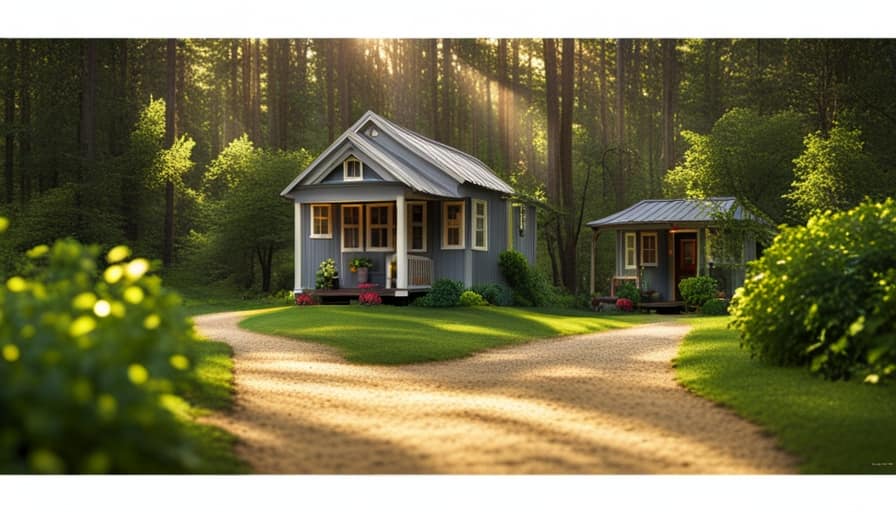
-
Psychological impact: The psychological impact of living in a small space shouldn’t be underestimated. It requires adaptability and a mindset shift to embrace a simpler way of life.
Transitioning into the next section, let’s now address the question of whether tiny houses have plumbing and electricity.
Do Tiny Houses Have Plumbing and Electricity
Fortunately, tiny houses do have plumbing and electricity to meet our basic needs. While the plumbing and electrical requirements for tiny houses aren’t as extensive as those for traditional homes, they’re still essential for a comfortable living experience.
When it comes to plumbing, tiny houses typically have a small bathroom with a toilet, shower, and sink. Many tiny houses use a composting toilet or a dry flush toilet to minimize water usage.
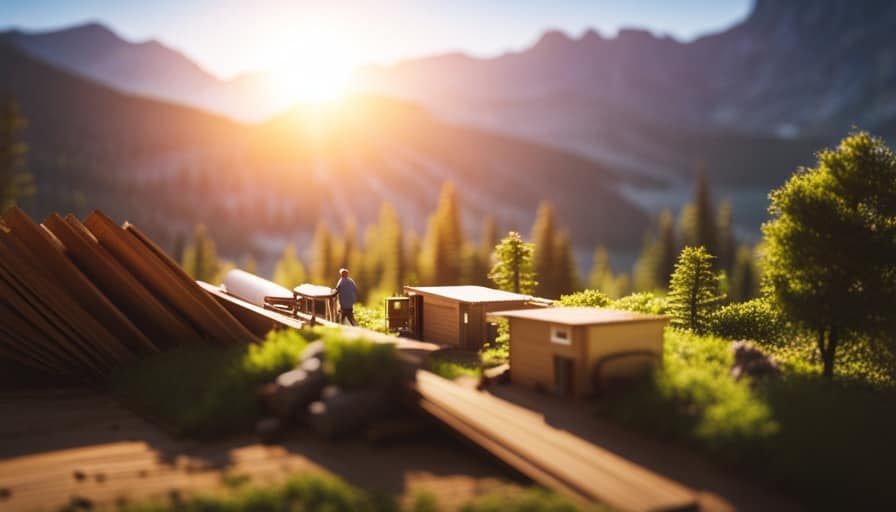
For electricity, tiny houses can be connected to the grid, just like regular homes. However, there are also off-grid options available. These include solar panels, wind turbines, and propane generators, which provide power to the tiny house even when there’s no access to the grid.
It’s important to assess your needs and choose the plumbing and electrical options that are most suitable for your tiny house lifestyle.
Are Tiny Houses Environmentally Friendly
How do tiny houses contribute to environmental sustainability?
Tiny houses have a positive environmental impact due to their sustainable construction and small footprint. Here are four ways in which tiny houses are environmentally friendly:
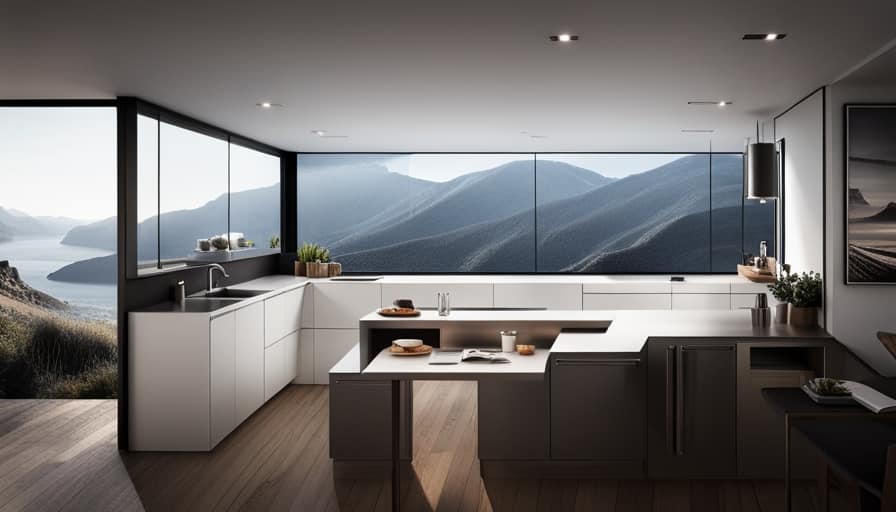
-
Energy Efficiency: Tiny houses are designed to maximize energy efficiency by using insulation, energy-efficient appliances, and solar power. This reduces energy consumption and lowers carbon emissions.
-
Reduced Material Consumption: Tiny houses require fewer materials to build compared to traditional homes, resulting in less waste and a smaller ecological footprint.
-
Water Conservation: Tiny houses typically have smaller water systems, which encourages water conservation. This includes low-flow fixtures, rainwater collection systems, and composting toilets.
-
Minimal Land Disturbance: Tiny houses require less land, allowing for minimal land disturbance during construction. This helps preserve natural habitats and ecosystems.
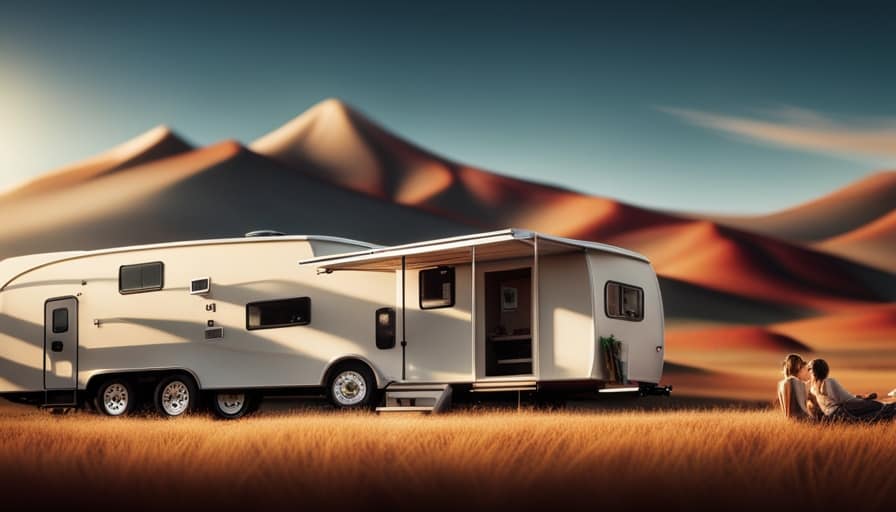
Can You Finance a Tiny House?
Yes, we can definitely finance a tiny house if we meet the necessary requirements and work with a lender who specializes in tiny house financing. Tiny house financing is becoming more accessible as the popularity of tiny homes continues to grow.
There are several loan options available for those looking to finance their tiny house. One option is a personal loan, which is a lump sum that can be used for any purpose, including financing a tiny house.
Another option is a construction loan, which is specifically designed for financing the construction of a new home, including a tiny house.
Additionally, some lenders offer specialized tiny house loans that cater specifically to the unique financing needs of tiny house owners. These loans often have flexible terms and competitive interest rates.
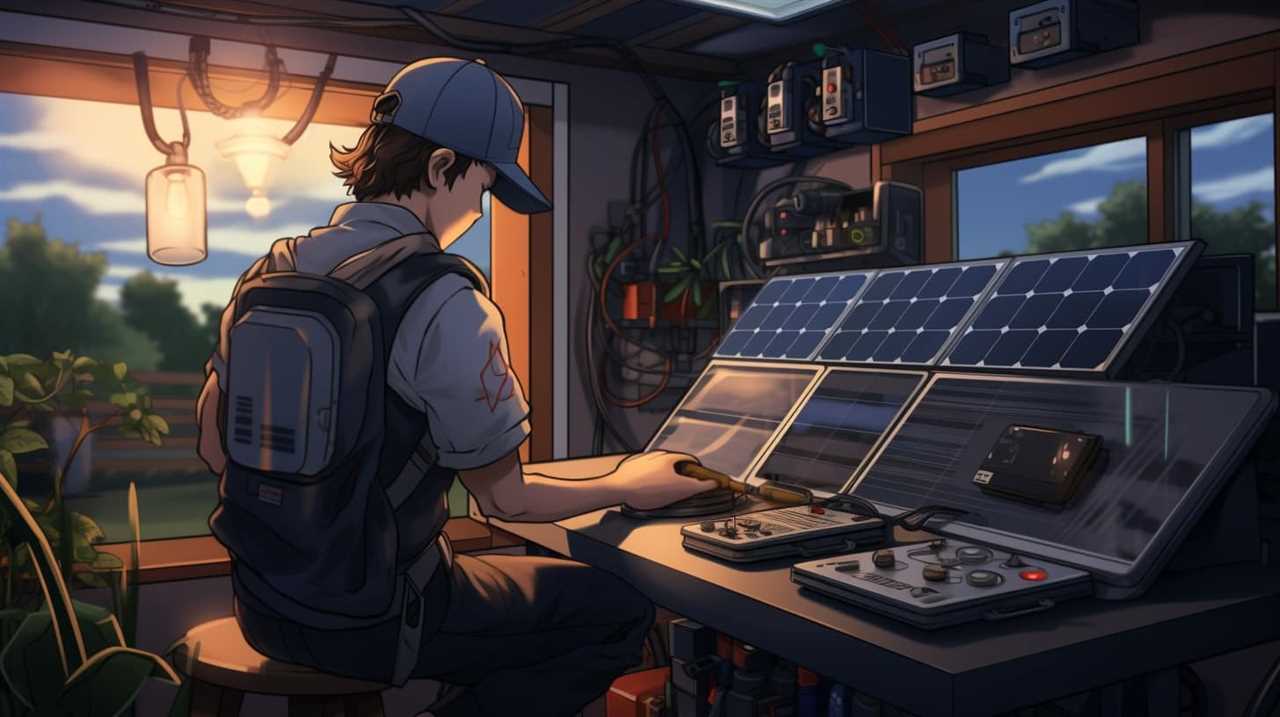
It’s important to do your research and compare different loan options to find the best fit for your needs.
Frequently Asked Questions
Are There Any Restrictions or Regulations for Parking or Living in a Tiny House?
Parking regulations and living restrictions for tiny houses vary depending on location. It is important to research local zoning laws and building codes to ensure compliance. Additionally, some communities may have specific requirements for parking and occupancy.
How Long Does It Typically Take to Build a Tiny House?
On average, it takes around 3 to 6 months to build a tiny house. The construction timeline varies depending on factors like design complexity and available resources. Costs can range from $15,000 to $80,000, depending on size and materials used.
Can I Live in a Tiny House With My Family?
Yes, you can live in a tiny house with your family! Tiny houses offer creative living arrangements and efficient space utilization to accommodate multiple family members. It’s a cozy and practical option for those seeking a simpler lifestyle.

What Are the Insurance Requirements for a Tiny House?
When it comes to insurance coverage for a tiny house, there are a few key factors to consider. We need to think about the cost, what is covered, and any additional requirements.
Are There Any Financing Options Specifically Available for Tiny Houses?
There are financing options specifically available for tiny houses, such as tiny house loans. These options can help individuals secure the necessary funds to purchase or build their own tiny house.
Conclusion
In conclusion, tiny houses offer a unique and affordable housing option for those seeking a simpler and more sustainable lifestyle.
While some may argue that living in a tiny house comes with its challenges, such as limited space and potential zoning restrictions, these obstacles can be overcome with careful planning and creativity.
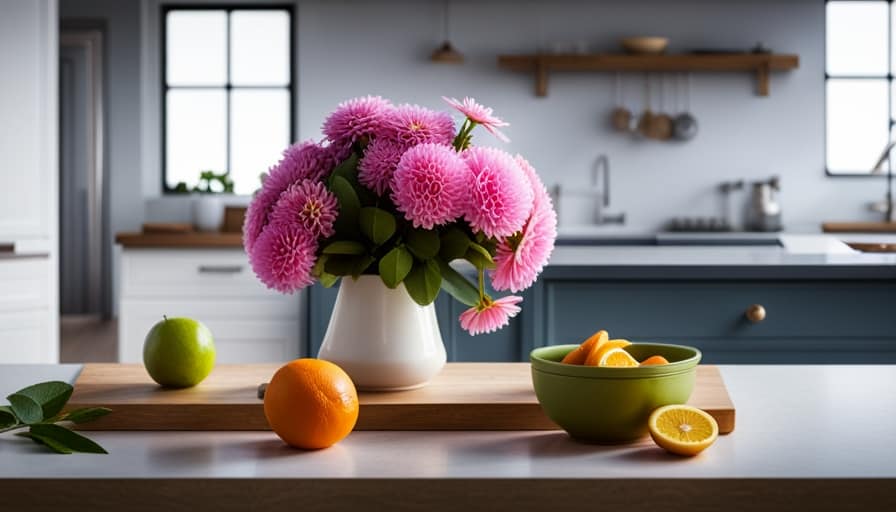
Ultimately, the benefits of living in a tiny house, including reduced costs, environmental friendliness, and the ability to customize the interior, make it a worthwhile and fulfilling choice for many individuals.
I’m Theodore, and I love tiny houses. In fact, I’m the author of Tiny House 43, a book about tiny houses that are also tree houses. I think they’re magical places where imaginations can run wild and adventures are just waiting to happen.
While tree houses are often associated with childhood, they can be the perfect adult retreat. They offer a cozy space to relax and unwind, surrounded by nature. And since they’re typically built on stilts or raised platforms, they offer stunning views that traditional homes simply can’t match.
If you’re looking for a unique and romantic getaway, a tree house tiny house might just be the perfect option.

